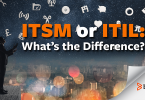The Digital Revolution is creating huge opportunities for innovation and productivity in the workplace. However, this brings significant challenges to enterprise support functions. The scope of technical support is widening as technology moves from the back-office to the front-line. As a result, support organizations are expected to provide support for an ever-wider range of technology, and in an increasingly agile fashion.
Knowledge Management is fast emerging as a way to mitigate this challenge. Effective use of knowledge significantly improves self-service experiences for end customers, and generates faster and more successful outcomes for those issues which still reach the service center.
However, effective implementation of Knowledge Management is still proving to be a significant challenge in the industry. Organizations often struggle with either of two significant challenges: building a knowledge base, and using it successfully once it’s there.
It is often difficult for support teams to find the time to capture good knowledge, especially if it is not formally entrenched as a priority for them. Some enterprises have addressed this with a dedicated knowledge team, but a team like this is unlikely to have sufficient subject matter expertise in all areas. As a result, they still rely on input from those over-worked specialists.
Even where knowledge has been captured, making good use of it can be a challenge. As Katrina Pugh and Nancy M. Dixon put it the HBR Article on Knowledge Management, Don’t Just Capture Knowledge—Put It to Work: “what’s the point of capturing organizational knowledge if it’s going to be tossed into some file and forgotten?” This effect can be exacerbated in organizations who have addressed the content creation challenge by embracing wide participation or even crowdsourcing: noise can overwhelm the signal, making knowledge difficult to find.
Each of these issues creates a negative cycle: support teams are unwilling to spend time searching a knowledge base if they don’t expect to find answers.
Knowledge Centered Support, or KCS, is one solution to this challenge. It is becoming increasingly important to many of our major customers and appears prominently in the Gartner 2015 “Hype Cycle”. KCS is so important, in fact, that we have embedded it into BMC Remedy Service Management, specifically the December 2015 releases of Remedy 9.1 and Smart IT 1.3.01.
So, what is all the fuss about, and why should KCS be something you consider in your support organization?
Knowledge Centered Support was developed by the Consortium for Service Innovation to address the knowledge challenge head-on, by moving knowledge creation and enhancement away from the periphery, and putting it at the heart of every support interaction.
KCS is a framework of two halves. This continual engagement with knowledge, on an issue-by-issue basis, is defined in what KCS calls the “Solve Loop.” The key expectations of this are:
- When dealing with an issue, each support person is expected to look for knowledge that corresponds to the issue and correctly defines a solution. This gets linked to the issue.
- If an article exists, but it needs some revisions, then the support person should flag it with appropriate suggestions.
- If there is no content already available, they are encouraged to create a new article, describing the context of the customer’s issue, and the steps taken to resolve it.
This leads, of course, to much more rapid creation of content. It also requires a certain commitment from the organization, because it can add additional effort to each support case.
If the Solve Loop is working effectively, then a lot of new content is created (which is no bad thing, says KCS, because it fosters a long tail effect). The other half of KCS, known as the “Evolve Loop,” provides a framework of more proactive processes, designed to ensure participation and quality.
- Important articles get special attention. These can be identified by usage stats collected from the actions of people participating in the Solve Loop.
- Missing knowledge is identified by tracking user searches which have not resulted in successful linkage to knowledge. Where necessary, articles can be created to fill the gaps.
- Knowledge authors are guided by coaches, using a set of automated performance indicators, manual reviews of articles (known as Article Quality assessments), and general mentoring. Users are progressed through a set of competency and trust levels, moving from “Candidate,” through “Contributor,” to “Publisher.”

image source: KCS Version 5.3
If KCS is working well, the Solve Loop and the Evolve Loop combine to form a virtuous cycle. A significantly increased amount of content is created as a matter of course during day-to-day activities, and proactive effort gets focused on high priority items to ensure that the most important content is of the highest quality. Users’ participation is encouraged and their skills are enhanced.
KCS requires organizational commitment and management support. However, its advocates point to the significant benefits that can be realized for the support organization, its staff, and (importantly) its customers. That commitment, KCS argues, is paid back handsomely.
By embedding KCS best practices in Remedy we are enabling our customers to adopt and implement knowledge management as an integral part of the support process. This new functionality will empower our customers to significantly improve self-service and create a more efficient service desk capable of supporting the modern digital enterprise.
You can learn more about KCS at the Consortium for Service Innovation’s website.
Read the rest of our series on Knowledge Management:
Knowledge Management Strategies
Importance of Knowledge Management for the Digital Enterprise







